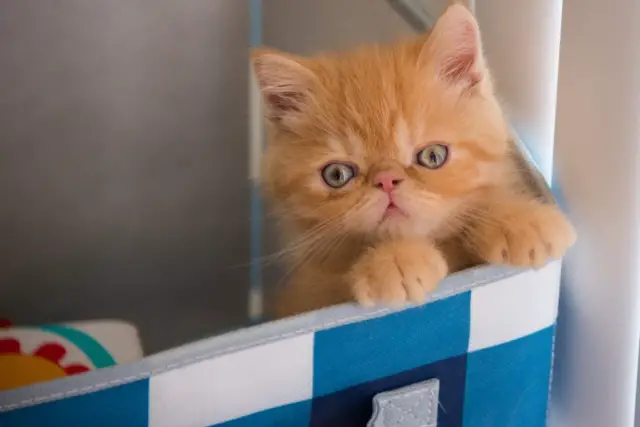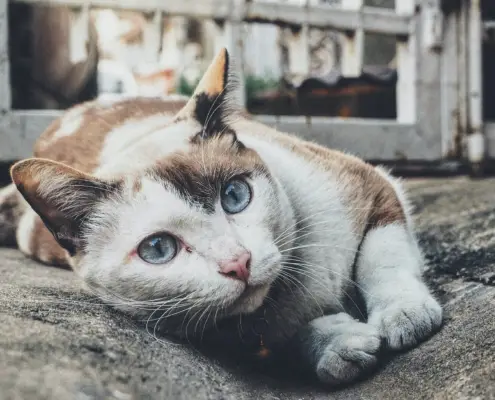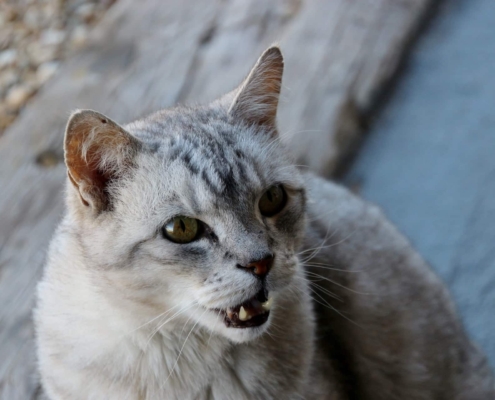
Catnip, scientifically known as Nepeta cataria, is a herb that has captivated the attention of felines for centuries. Its distinct scent and properties have made it a beloved enrichment tool for cat owners worldwide. But what exactly is catnip and why do cats love it so much?
Catnip is a member of the mint family and is native to Europe and Asia. It contains a compound called nepetalactone, which is responsible for its unique effects on cats. When cats come into contact with catnip, whether through smelling, eating, or even touching it, they often exhibit a range of interesting behaviors and physical reactions.
What is catnip and how does it work?
Catnip is a fragrant plant that contains essential oils, primarily nepetalactone. When cats smell or consume catnip, the nepetalactone stimulates their olfactory system, which is closely linked to the part of the brain responsible for regulating emotions and behaviors. This stimulation triggers a series of reactions in cats, leading to the fascinating responses we often observe.
The science behind cats’ response to catnip
The reason behind cats’ love for catnip lies in their unique biology. It has been observed that only about 50-75% of cats actually respond to catnip, and this response is genetically determined. Kittens under the age of six months are typically not affected by catnip, as they haven’t yet developed the necessary receptors to respond to it.
When a cat encounters catnip, the nepetalactone binds to specific receptors in their nasal tissue. These receptors, known as olfactory sensory neurons, activate and send signals to the brain’s amygdala and hypothalamus. These regions are associated with regulating emotions, behaviors, and certain physiological functions in cats.
The effects of catnip on cats – behavior and physical reactions
The effects of catnip on cats can vary from one feline to another. Some cats become extremely active and playful, while others may become more relaxed and sedated. There are even cats that display a combination of both reactions.
When cats are exposed to catnip, they may start rolling, rubbing, or pawing at it. They may also exhibit increased vocalization, purring, or even growling. These behaviors are often accompanied by dilated pupils, increased heart rate, and heightened excitement. It is worth noting that the effects of catnip are temporary, lasting anywhere from a few minutes to a couple of hours.
Why do cats love catnip? Exploring the theories and possible explanations
The exact reason why cats love catnip is still not fully understood, but there are several theories and possible explanations. One theory suggests that the response to catnip is an inherited trait, with certain genes influencing a cat’s sensitivity to the compound nepetalactone. Cats inherit their response to catnip from their parents, so if one parent is affected by catnip, there’s a higher likelihood that their offspring will be too.
Another theory proposes that catnip triggers a similar response to that of pheromones. Pheromones are chemical substances that animals, including cats, use for communication and social bonding. It is possible that catnip mimics these pheromones, creating a sense of familiarity and comfort for cats.
The role of genetics in cats’ response to catnip
Genetics play a crucial role in cats’ response to catnip. Studies have shown that the sensitivity to catnip is inherited, with the gene responsible for the response being dominant. This means that if a cat inherits the gene from either parent, it is likely to respond to catnip. However, if a cat does not possess the gene, it will not have any reaction to catnip at all.
Interestingly, not all cat species are affected by catnip. Domestic cats, such as the common house cat, are more likely to respond to catnip, while big cats like lions and tigers do not display any interest or response to it. This further supports the notion that genetics play a significant role in the feline fascination with catnip.
Other plants that have similar effects on cats
While catnip is the most well-known plant that affects cats, there are other plants that can elicit similar responses. Some examples include valerian root, silver vine, and honeysuckle. These plants contain compounds that stimulate cats in a similar manner to catnip, providing alternative options for cat owners to explore.
It’s important to note that not all cats respond the same way to these alternative plants. Some cats may prefer catnip over other plants, while others may have a stronger reaction to valerian root or silver vine. Experimentation and observation are key to discovering what plants your cat enjoys the most.
Catnip and its benefits for cat owners
Catnip offers numerous benefits for both cats and their owners. For cats, it provides mental and physical stimulation, promoting healthy behavior and exercise. It can also be used as a training tool, encouraging positive behaviors and redirecting unwanted habits. Additionally, catnip can help relieve stress and anxiety in cats, making it a useful tool for calming nervous or anxious felines.
For cat owners, catnip can be a source of entertainment and bonding with their furry companions. Watching a cat play and interact with catnip can be highly entertaining and bring joy to both the cat and the owner. It also provides an opportunity for owners to engage in interactive play sessions with their cats, strengthening the human-animal bond.
How to use catnip to entertain and engage your cat
There are various ways to use catnip to entertain and engage your cat. One popular method is to sprinkle dried catnip on toys or scratching posts. This encourages cats to play and interact with the items, providing mental and physical stimulation. Catnip can also be stuffed into toys or placed inside a catnip-filled pillow, creating an enticing playtime experience for your feline friend.
Another option is to grow fresh catnip in your garden or in pots indoors. This allows your cat to experience the plant in its natural form, as they can roll, rub, and chew on the leaves. However, it’s important to ensure that the catnip is grown in a safe and controlled environment, away from any potential hazards or pesticides.
Lastly, catnip can be used as a training aid. By using catnip as a reward during training sessions, you can motivate and reinforce positive behaviors in your cat. Whether it’s teaching them new tricks or encouraging them to use a scratching post, the enticing scent of catnip can be a powerful tool in shaping your cat’s behavior.
Understanding and enjoying the feline fascination with catnip
Catnip is a natural and intriguing herb that has captured the hearts of cats for centuries. Its effects on felines, both in terms of behavior and physical reactions, have fascinated researchers and cat owners alike. While the exact reason why cats love catnip remains a mystery, the role of genetics and the similarities to pheromones provide some insight into this feline fascination.
As cat owners, we have the privilege of witnessing our cats’ joy and excitement when they encounter catnip. By understanding the science behind catnip and utilizing it as a tool for enrichment and engagement, we can provide our cats with a stimulating and enjoyable environment. So, next time you see your cat rolling around in delight or eagerly pawing at a catnip-filled toy, take a moment to appreciate the magic of catnip and the happiness it brings to our feline friends.
If you enjoyed my article, I would appreciate you sharing it with your network.

Sima Ndlebe
Sima writes for CatBuzz. He is interested in Cats, Health and Fitness, and Entrepreneurship.
Published: 3 May 2024



